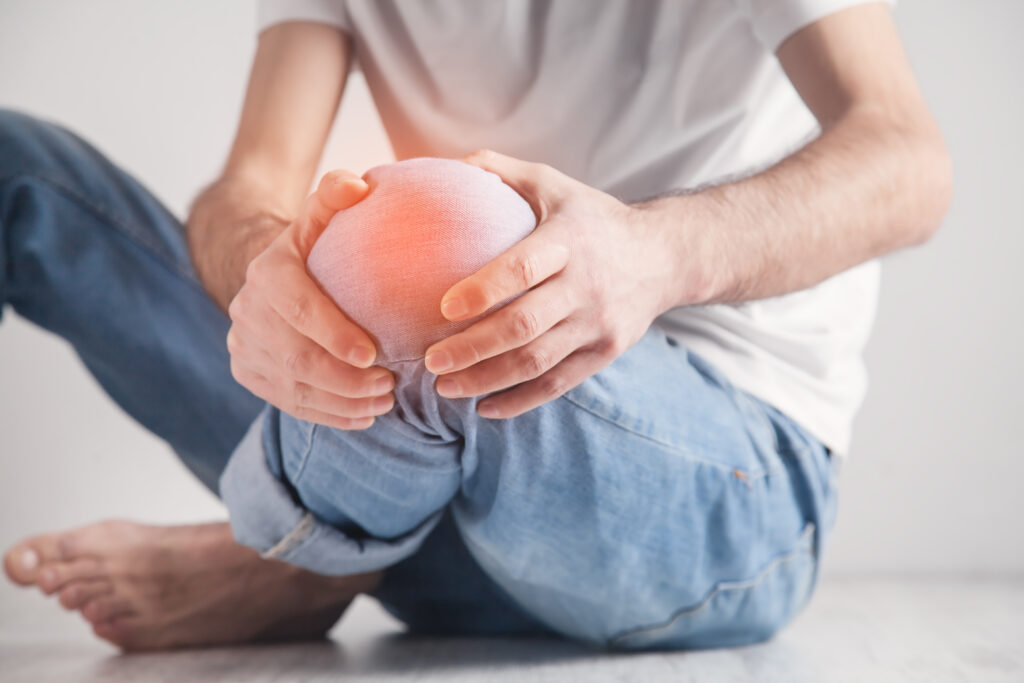If you're seeking effective ways to manage pain without relying solely on medication, you might find natural strategies worth exploring. From dietary adjustments to essential oils and acupuncture, there are various methods that can support your well-being. You may discover that simple changes in your daily routine can lead to significant relief. Curious about which specific techniques can be seamlessly integrated into your life? Let's take a closer look at these seven natural pain relief strategies that might just make a difference.
Herbal Remedies
Herbal remedies offer a natural approach to pain relief that many people find effective. You might be surprised to learn that various plants and herbs have been used for centuries to alleviate discomfort. These natural solutions can provide an alternative to conventional medications, which sometimes come with unwanted side effects.
One of the most popular herbs is turmeric. Its active compound, curcumin, has powerful anti-inflammatory properties that can help reduce pain from conditions like arthritis and muscle soreness. You can easily incorporate turmeric into your diet by adding it to smoothies, soups, or teas.
Another notable herb is ginger, known for its ability to relieve pain and reduce inflammation. Drinking ginger tea or adding fresh ginger to your meals can enhance your overall health while providing pain relief.
Willow bark is another herbal remedy you might consider. Often referred to as "nature's aspirin," it contains salicin, which can help reduce pain and inflammation. You can find willow bark in various forms, including teas and capsules.
If you're dealing with menstrual cramps, cramp bark is worth exploring. It's been traditionally used to ease menstrual discomfort and promote relaxation.
As you explore these herbal options, remember to consult with a healthcare professional, especially if you're taking other medications or have underlying health conditions. Herbal remedies can be a valuable part of your pain management toolkit, offering a holistic approach to improving your wellbeing.
Essential Oils
Essential oils can be a powerful tool in managing pain naturally.
You'll want to explore popular options, learn effective application methods, and consider safety guidelines to get the most benefit.
Let's unpack how these aromatic oils can fit into your pain relief strategy.
Popular Essential Oils
When it comes to natural pain relief, many people turn to popular vital oils for their soothing properties. These aromatic oils, derived from plants, can help alleviate discomfort and promote relaxation.
Lavender oil is often praised for its calming effects, making it ideal for headaches and muscle tension. If you're dealing with inflammation, peppermint oil is a great choice; its cooling sensation can relieve pain and improve circulation.
Eucalyptus oil is another favorite, especially for respiratory issues and muscle soreness. It can open up airways while providing a revitalizing scent. For those struggling with joint pain, ginger oil may offer relief due to its anti-inflammatory qualities.
Then there's chamomile oil, which is well-known for its ability to reduce stress and promote sleep, indirectly helping with pain relief.
Finally, tea tree oil is recognized for its antiseptic properties and can be beneficial for skin-related discomforts.
Incorporating these vital oils into your routine can be a natural way to address pain. Just remember, it's important to choose high-quality oils and consider any personal allergies or sensitivities before use.
Application Methods
There are several effective methods to apply essential oils for pain relief, allowing you to choose what works best for you.
One popular method is topical application. You can mix a few drops of your chosen essential oil with a carrier oil, like coconut or jojoba oil, and gently massage it into the affected area. This helps the oil penetrate the skin while providing soothing relief.
Another method is inhalation. You can add a few drops of essential oil to a diffuser, letting the soothing aroma fill your space. This method is particularly beneficial for headaches or stress-related pain. Alternatively, you can simply inhale the oil directly from the bottle or place a drop on a tissue.
You might also consider adding essential oils to your bath. Just mix a few drops with a carrier oil before adding them to warm water. This creates a relaxing experience while delivering pain relief through skin absorption and inhalation.
Finally, if you're on the go, roll-on essential oil blends make for convenient application. Just roll it onto the sore area for instant relief.
Experiment with these methods to see which ones work best for your individual needs.
Safety Considerations
Using essential oils can be a wonderful way to manage pain, but it's crucial to prioritize safety. Before using any essential oil, make sure you do your research. Not all oils are safe for everyone, especially if you have allergies, skin sensitivities, or chronic health conditions.
Always dilute essential oils with a carrier oil, like coconut or jojoba oil, before applying them to your skin. This helps prevent irritation and guarantees your skin absorbs the oil effectively.
When using essential oils, perform a patch test first. Apply a small amount of diluted oil to a discreet area of skin and wait 24 hours to see if any reaction occurs. If you experience redness, itching, or burning, discontinue use immediately.
Also, be cautious with the oils you choose. Some oils, like wintergreen or eucalyptus, can be toxic in high amounts, especially for children or pets.
Pregnant or nursing women should consult a healthcare provider before using essential oils.
Acupuncture
Acupuncture has a rich history rooted in traditional Chinese medicine, and it's gaining popularity for its effectiveness in pain relief.
You might be surprised to learn how this ancient practice can help alleviate various types of pain.
Let's break down the benefits and the treatment process so you can understand how it works.
History of Acupuncture
For over 2,500 years, acupuncture has played a significant role in traditional Chinese medicine, evolving through various dynasties and cultural influences. You might be surprised to learn that its origins trace back to ancient China, where practitioners used sharpened stones and later metals to stimulate specific points on the body.
Early texts, like the "Huangdi Neijing," laid the groundwork for understanding how acupuncture affects energy flow, or "qi," within the body.
During the Han dynasty, acupuncture gained prominence as it became integrated into other medical practices. As you explore its history, you'll notice that it spread to neighboring countries, adapting to diverse cultures and beliefs. This adaptability allowed acupuncture to thrive even during challenging times, such as the Cultural Revolution in China.
In the 20th century, acupuncture began to gain recognition in the West, often viewed as an alternative therapy. Its popularity surged, leading to increased research and acceptance in various medical communities.
Today, you're likely to find acupuncture clinics worldwide, reflecting its long-standing tradition and effectiveness in promoting overall well-being. Understanding this rich history helps you appreciate its value in modern health practices.
Benefits for Pain Relief
Pain relief through acupuncture offers a holistic approach that targets the root causes of discomfort. By stimulating specific points on your body, acupuncture helps restore balance and promote natural healing.
Here are some key benefits you can expect:
- Reduced Pain: Many people experience significant pain relief, whether it's from chronic conditions like arthritis or acute injuries.
- Improved Circulation: Acupuncture enhances blood flow, which aids in delivering nutrients and oxygen to affected areas, speeding up recovery.
- Stress Relief: The treatment can lower stress levels by balancing your body's energy, leading to improved emotional well-being.
- Fewer Side Effects: Unlike many pharmaceuticals, acupuncture generally has minimal side effects, making it a safer alternative for pain management.
With these benefits, acupuncture can be a powerful tool in your pain relief arsenal.
Whether you're seeking relief from tension headaches, back pain, or other discomforts, acupuncture's holistic approach might just be the solution you've been looking for.
Treatment Process Explained
When you decide to try acupuncture for pain relief, the treatment process typically begins with a thorough evaluation. During this initial consultation, your acupuncturist will ask about your medical history, lifestyle, and specific pain issues. This helps them tailor a treatment plan to your needs.
Next, you'll lie down in a comfortable position, and the acupuncturist will insert fine needles into specific points on your body. You might feel a slight pinch, but it's usually not painful. The needles remain in place for about 15 to 30 minutes while you relax.
Throughout the session, the acupuncturist may use techniques like heat or electrical stimulation to enhance the effects. Afterward, you might feel a sense of relaxation or mild soreness in the treated area.
Typically, a series of sessions is recommended for ideal results. Your acupuncturist will discuss the frequency and duration of treatments based on your condition.
Mindfulness and Meditation
Embracing mindfulness and meditation can transform your approach to managing discomfort and stress. When you focus on the present moment, you create a mental space to observe your thoughts and feelings without judgment. This practice can help you detach from pain and promote relaxation, leading to a significant decrease in your overall discomfort.
Here are four effective strategies to incorporate mindfulness and meditation into your daily routine:
- Breath Awareness: Spend a few minutes each day focusing solely on your breath. Inhale deeply through your nose, hold for a moment, and exhale slowly through your mouth. This simple practice grounds you and calms your mind.
- Body Scan: Lie down comfortably and mentally scan your body from head to toe. Acknowledge areas of tension or pain without trying to change them. This helps you connect with your body and enhances awareness of discomfort.
- Guided Meditation: Use apps or online resources that offer guided meditation sessions. These can provide structure and help you stay focused, especially if you're new to meditation.
- Mindful Walking: As you walk, concentrate on each step. Feel your feet touch the ground and notice the rhythm of your movement. This practice connects you to the present, allowing you to release tension.
Physical Activity
Integrating physical activity into your routine can considerably enhance your overall well-being and further support pain management. When you engage in regular exercise, you're not only benefiting your physical health but also your mental state. Exercise releases endorphins, which are natural painkillers, and can help lift your mood.
You don't need to jump into an intense workout regimen to reap the benefits. Simple activities like walking, stretching, or gentle yoga can be incredibly effective. Aim for at least 30 minutes of moderate activity most days of the week. This can be broken down into shorter sessions, making it easier to fit into your schedule.
Listen to your body and choose activities that you enjoy. If you prefer low-impact exercises, consider swimming or cycling. These options can be gentler on your joints while still providing a solid workout.
Incorporating strength training exercises can also improve muscle support around painful areas, offering additional relief. Pay attention to how you feel during and after your workouts. If you notice increased discomfort, it's crucial to adjust your routine accordingly.
You might need to modify your movements or consult a professional for guidance. Remember, consistency is key. Over time, you'll likely notice improvements in both your pain levels and your overall quality of life.
Hot and Cold Therapy
Hot and cold therapy is a simple yet effective way to manage pain and promote healing. This approach uses temperature to alleviate discomfort and can be easily integrated into your daily routine.
Whether you're dealing with muscle soreness, joint pain, or inflammation, you can harness the benefits of this method.
Here's how to effectively use hot and cold therapy:
1. Heat Application: When you're experiencing stiffness or chronic pain, applying heat can be beneficial. Use a heating pad, hot water bottle, or warm towel.
Heat helps increase blood flow, relax muscles, and soothe aching areas.
2. Cold Application: For acute injuries or swelling, cold therapy works wonders. An ice pack or a bag of frozen peas can reduce inflammation and numb sharp pain.
Just remember to wrap the ice in a cloth to prevent skin damage.
3. Alternating Temperatures: Sometimes, alternating between hot and cold can provide the best relief. Start with heat for 15-20 minutes, then switch to cold for another 15-20 minutes.
This can enhance circulation and reduce pain.
4. Timing and Frequency: You can use hot or cold therapy several times a day, depending on your needs.
Just make sure to allow your skin to return to normal temperature between applications to avoid irritation.
Dietary Adjustments
After exploring how hot and cold therapy can ease pain, consider how dietary adjustments can further enhance your overall well-being. What you eat plays a vital role in managing pain and inflammation. By making mindful choices, you can support your body's natural healing processes.
First, focus on incorporating anti-inflammatory foods into your diet. Fruits and vegetables, especially those rich in antioxidants like berries, leafy greens, and cruciferous veggies, can help reduce inflammation. Omega-3 fatty acids found in fatty fish, walnuts, and flaxseeds are also beneficial. They not only combat inflammation but may also contribute to overall joint health.
Next, pay attention to your intake of processed foods and sugars. These can trigger inflammatory responses in your body, potentially worsening your pain. Instead, opt for whole, unprocessed foods whenever possible. Whole grains, lean proteins, and healthy fats can nourish your body without adding unnecessary stress.
Don't forget about hydration! Drinking enough water is essential for maintaining proper bodily functions, including joint lubrication. Aim for at least eight glasses a day, adjusting based on your activity level.
Lastly, consider keeping a food diary. This can help you identify any foods that might trigger pain or discomfort and guide you toward better choices.
Conclusion
Incorporating these seven natural pain relief strategies into your routine can greatly enhance your well-being. From herbal remedies and essential oils to acupuncture and mindful practices, you have a variety of options to explore. Regular physical activity and hot and cold therapy can also target discomfort effectively. Don't forget to adjust your diet with anti-inflammatory foods for added benefits. Always consult your healthcare professional for personalized guidance, and take charge of your pain management journey today!



